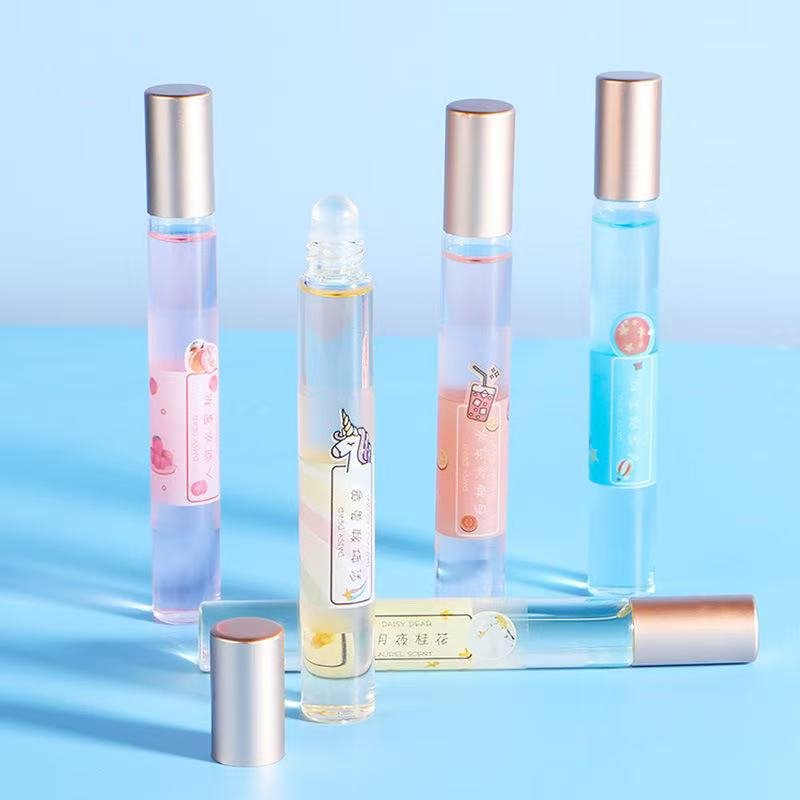Since last year, the Five Elements have become popular, which means the awakening of traditional Chinese culture. So what are the Five Elements? What is their relationship with perfume bottles?
The Five Elements play a crucial role in Chinese culture, influencing various aspects of life, including philosophy, medicine, art, and Feng Shui. They provide a framework for understanding the natural world and human experiences, promoting balance and harmony.
In traditional Chinese medicine, the elements correlate with organs and health, guiding diagnosis and treatment. In philosophy, they help explain the interactions and transformations in nature and human relationships. Additionally, in feng shui, the elements inform spatial arrangements to enhance energy flow. Overall, the Five Elements embody a holistic approach to life, emphasizing interconnectedness and balance.
The Five Elements of Chinese philosophy—Wood, Fire, Earth, Metal, and Water—represent fundamental forces in nature and the cosmos. Each element has distinct qualities, associations, and relationships with various aspects of life, including health, emotions, seasons, and colors. Here’s a brief overview of each:
- Wood:
- Characteristics: Growth, vitality, flexibility.
- Season: Spring.
- Color: Green.
- Associations: Represents creativity, expansion, and the ability to nurture. It’s linked to the liver in traditional Chinese medicine.
- Fire:
- Characteristics: Energy, passion, transformation.
- Season: Summer.
- Color: Red.
- Associations: Symbolizes warmth, joy, and illumination. It’s associated with the heart and circulation.
- Earth:
- Characteristics: Stability, nourishment, balance.
- Season: Late summer or transitional periods.
- Color: Yellow or brown.
- Associations: Represents grounding, nurturing, and fertility. It’s connected to the spleen and digestion.
- Metal:
- Characteristics: Strength, resilience, clarity.
- Season: Autumn.
- Color: White or gray.
- Associations: Symbolizes structure, precision, and determination. It relates to the lungs and respiratory health.
- Water:
- Characteristics: Fluidity, adaptability, depth.
- Season: Winter.
- Color: Black or blue.
- Associations: Represents intuition, emotion, and the unconscious. It’s linked to the kidneys and bladder.

Interactions Between the Elements
The Five Elements interact in two primary cycles: the generating (or nurturing) cycle and the controlling cycle.
- Generating Cycle:
- Wood feeds Fire.
- Fire creates Earth (ash).
- Earth bears Metal.
- Metal holds Water (condensation).
- Water nourishes Wood.
- Controlling Cycle:
- Wood parts Earth (roots).
- Earth absorbs Water (drainage).
- Water extinguishes Fire.
- Fire melts Metal.
- Metal cuts Wood.
Application to Fragrances
In the context of perfumes, different fragrances can be aligned with these elements based on their characteristics and the emotional responses they evoke. For example:
- Wood Fragrances: Earthy, herbal scents like cedar or sandalwood can reflect growth and vitality.
- Fire Fragrances: Bright, spicy, and warm notes such as cinnamon or bergamot can evoke passion and energy.
- Earth Fragrances: Soft, comforting scents like vanilla or amber can symbolize stability and balance.
- Metal Fragrances: Crisp, clean notes such as citrus or metallic accords can reflect clarity and resilience.
- Water Fragrances: Fresh, aquatic scents like cucumber or marine notes can represent fluidity and depth.
Matching Bottles with Fragrances
The color of the perfume bottle can also align with the corresponding element to enhance the overall theme. For example:
- Green bottles for wood-based fragrances.
- Red bottles for fire-inspired scents.
- Yellow or brown bottles for earthy perfumes.
- White or gray bottles for metallic fragrances.
- Black or blue bottles for water fragrances.

Incorporating the characteristics of the Five Elements into perfume bottle design can create a strong philosophical appeal. Each element’s unique traits—like growth from Wood, passion from Fire, stability from Earth, clarity from Metal, and fluidity from Water—can resonate with consumers on a deeper level.
When a bottle’s design reflects these elements, it not only enhances the aesthetic but also conveys meaning and intention, making the fragrance more attractive. This thoughtful approach can enhance customer connection and drive sales by aligning with cultural values and beliefs, ultimately creating a more compelling product experience.
Springbottles can offer personalized customization services that resonate with Chinese traditional culture, allowing customers to create unique, culturally meaningful fragrances. By integrating elements like the Five Elements philosophy, customers can choose scents that align with their personal tastes and cultural beliefs. This approach not only enhances customer engagement but also taps into the growing demand for personalized products. By celebrating Chinese heritage in the design and customization process, Springbottles can effectively open up new market opportunities and foster deeper connections with consumers.







